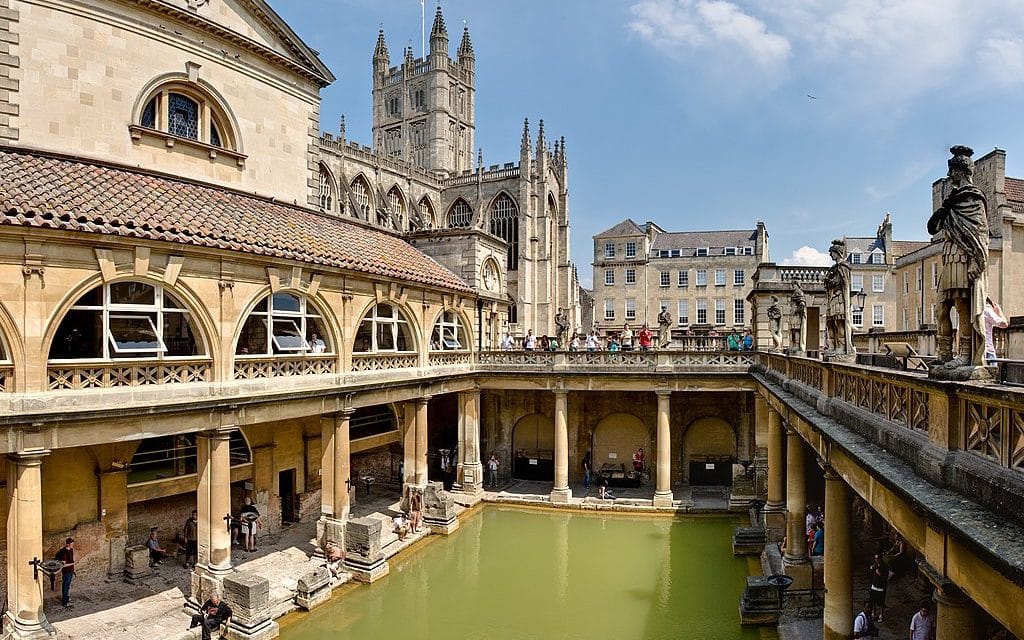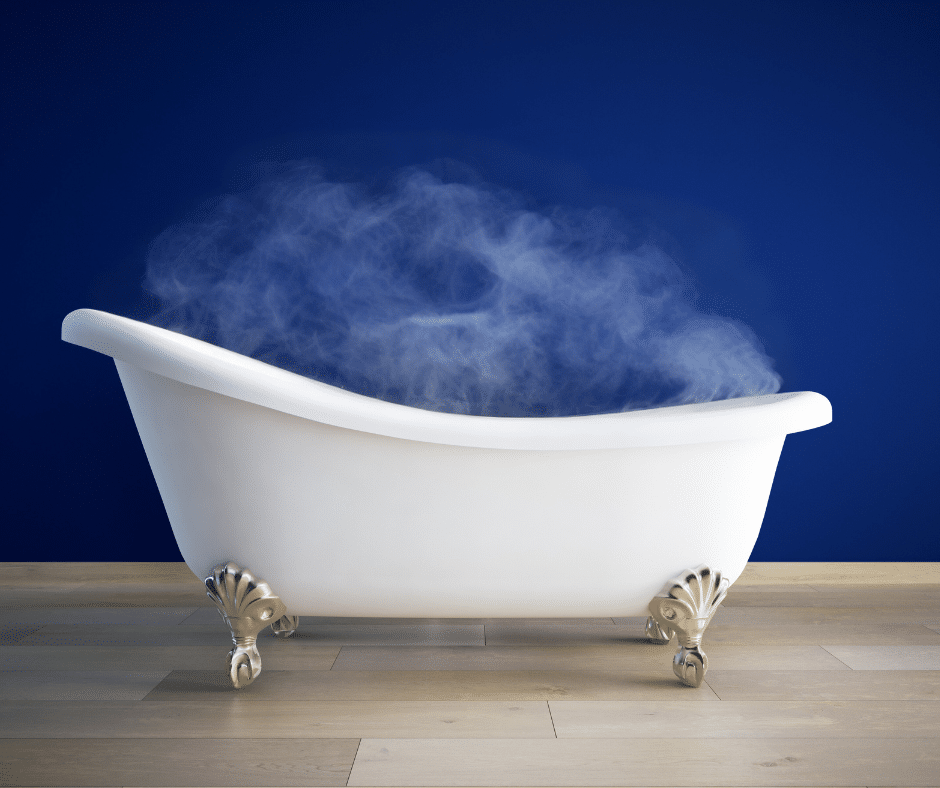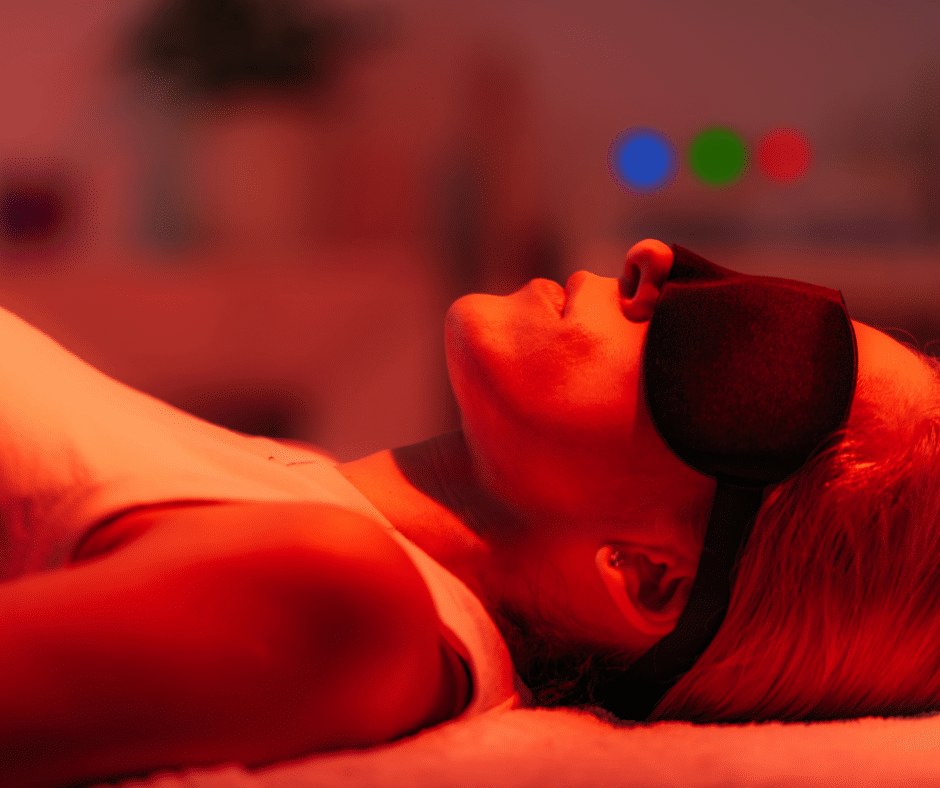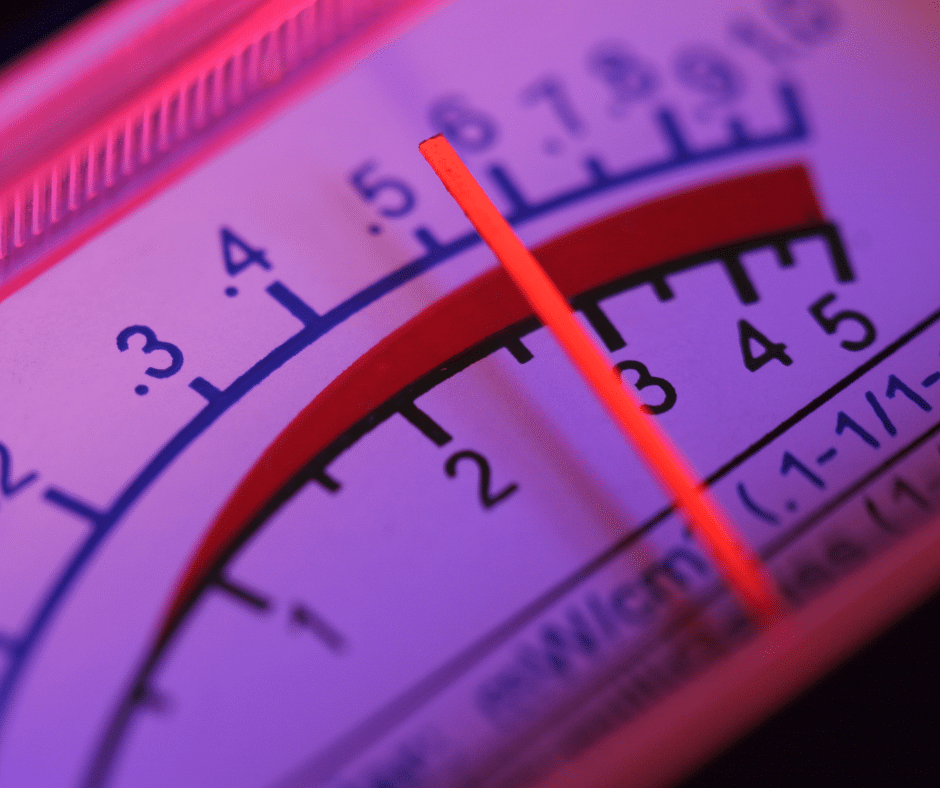Quick History of Lymphatic Baths
Hot baths have been used for over four millenniums. Some suggest the first bath was hand-chiseled out of solid granite specifically for the ancient Persian King Phraortes around 600 BC.

Hot baths were also used as a form of therapeutic healing in Ancient Greece, even by well-known Greek Philosophers such as Hippocrates, Plato, and Homer. They basically had ancient country clubs placed around water springs where people would gather and socialize.
Ancient Rome also utilized hot baths as means of recovery to help soldiers heal from their battle wounds and various ailments. The Romans built very large and upscale spas across their Empire, and they would commonly be made with massage parlors, restaurants, and even sports arenas as well.
The term “spa” is actually derived from the Latin acronym “Sanus Per Aquam.” This translates to “health through water.”
Modern-Day Hot Tub Development
Modern-day hot tubs came about in the late 1950s, supposedly from California, where they first used discarded wine barrels and old redwood vats. During the 1960s, there was a surge in hot tub development. However, at the time, water sanitation and filtration systems were not given much attention.
Using wood as a material for hot tubs was problematic as it didn’t prevent leaks, contained natural toxins, and fostered the growth of bacteria, mold, algae, and slime. However, the market saw the introduction of the first fiberglass shell hot tubs by the end of the decade, which were eventually replaced in the early seventies by cast acrylic.
The use of plastic in hot tub design allowed for easier maintenance of water cleanliness and integration of various features such as pumps, filters, control systems, and jets. This innovation drew inspiration from the swimming pool industry, but it was an Italian migrant who ultimately revolutionized hot tub design.
A few decades before, Candido Jacuzzi used his expertise in aviation engineering to create a whirlpool bath for his son Ken, who suffered from rheumatoid arthritis. Eventually, Roy Jacuzzi, a third-generation family member, introduced and sold the first whirlpool bath that was self-contained and entirely integrated, cementing the family name with hot tubs.
Modern hot tubs include traditional polypropylene or poly vinyl-encased hot tubs with a sand filter and pump. The problem with these tubs is that they emit a lot of EMF, and the continual heating of the synthetic materials can lead to the leaching of plastic chemicals that can be absorbed into our skin and alter our hormones, leaving us possibly more stressed than we started.
Other Modern Hot Tubs include:
- Japanese Wooden Hot Tubs, known as Ofuro, usually consist of wood and a heat source such as a charcoal or wood fire stove. You can also hook up your own small water heater alongside a sand filter/pump.
- DIY Aluminum Hot Tubs (prefer stainless Steel, much heavier) with a coil-like heat source utilizing a natural wood fire.
- A traditional small/medium bathtub in most homes.
There are a few more variations, but these are the most popular and the ones we utilize. If you are making your own DIY hot tub, we recommend using a small Hayward sand filter, ¼ hp pump, and
What’s the Purpose of Hot Baths?
Our lymph system is part of our circulatory system, which many of us in today’s polluted world do not work properly without cleaning and maintenance. Toxicity buildup in the lymphatic system, particularly in the glands and nodes, results in lymphatic congestion. The lymphatic system plays a crucial role in nourishing all cells in the body, with the exception of red and white blood cells. Moreover, it is responsible for detoxifying harmful substances, breaking them down into smaller molecules, and eliminating them through various pathways such as the bowels, urinary tract, tear ducts, ears, mucous membranes, and most importantly, the skin.
According to laboratory analysis by Ph.D. Aajonus Vonderplanitz, congestion in the lymphatic system is caused by chemicals like medications, industrial chemicals, preservatives, pesticides, and herbicides, along with hydrogenated oils such as margarine, soy, flavoring additives, and vegetable oils. These oils and combinations become hardened over 5-20 years and are not fluid at body temperature.
He also recommends that individuals gain some healthy fat before doing long 60-90 minute hot baths. For those who are beginners or a little underweight, it may be best to start with 20-45 minutes.
10 Benefits of Hot Baths
- It helps reduce tension and makes tissues more hydrated and malleable.
- It may help the Lymphatic system release stored metals, pollutants, and chemicals accumulated in our daily life.
- It helps eliminate metabolic waste products such as lactic acid buildup after a hard day of work or workout, which speeds up the healing of wounds, soreness, and achiness and can help with various ailments.
- It helps to stimulate perspiration and increase our overall circulation, which can help to cleanse and nourish our body from head to toe.
- Hot Baths help to soften, exfoliate and rehydrate the skin, our largest organ.
- It greatly helps to increase mobility, range of motion, and overall athletic performance.
- It can help to assist mental (and overall) relaxation while optimizing cognitive function.
- It helps shift our nervous system into a parasympathetic dominant state.
- Hot baths may help improve gut motility and optimize overall organ function.
- Hot baths can significantly improve overall sleep quality, including how deeply you fall and stay asleep.
What is the Best Time for a Hot Bath?
From our own experience and talking with others who have done them for some time, a few hours before bedtime is best for most. Some people may be able to handle them right before bed, but others may have trouble getting to sleep from being too hot. We also recommend starting with one bath every 3-4 days and working up to every day if needed and desired.
Hot bath vs. Saunas vs. Steam
Saunas can be too hot, damaging the skin, mucous membranes, eyes, lungs, bronchial, throat, and ears. And if you’re naked, private parts are included.
If you only have access to a sauna, it is healthier to shower and rinse toxic perspiration every 3 – 4 minutes so that toxins from your sweat are not reabsorbed into the skin, eventually reentering the body. If you prefer saunas, we highly recommend our favorite brand – Relax Saunas, a portable, efficient, fully enclosed infrared sauna with very low EMF. The Relax Saunas (code: MGS10 for 10% off) allow your body to heat up as much as 7.5 times more than normal, open infrared saunas. This means a hotter internal core temperature faster, allowing you to sweat more.
Steam baths are the least desirable form to evoke the perspiration of toxins from the body. Steam burns mucous membranes, including those in the lungs, bronchi, and sinuses. If using steam baths, be sure to use good mineral water to produce the steam or filter your water using a good shower filter.
Shower and rinse often. When showering with municipal city water that is chlorinated, it is best to have non-chemical filters installed that will eliminate chlorine and some other chemicals. Chlorine vapors (chloroform) gradually weaken and damage the lungs, blood, thyroid, and brain, predisposing people to pneumonia, other respiratory conditions, and meningitis of the spine and brain.
We only recommend the Omica Shower Filter for steam baths or showers, as it filters out the most containments. This is the one we use personally. You can use our discount code MGS for 10% off using our link here.
If you don’t have a spleen…
The spleen mainly regulates the body’s adaptability to cold and hot temperatures. It removes red blood cells from the bloodstream to thin the blood and cool the body. It adds red blood cells to the blood to thicken it and heat the body. People who do not have spleens should ease into hot baths and drink more fluids immediately prior to entering a hot bath.
How to Do a Hot Bath?
Step 1: Fill your tub with filtered water using a shower filter. (For the Omica Shower filter, use code: MGS for 10% off). When it’s filled up, we recommend adding 1-2 cups raw milk, 3 tablespoons raw unpasteurized apple cider vinegar, both 2 tablespoons of sun-dried clay, and magnesium bath formula (code: firsttime 10% off), which are encouraged, especially if you use city/municipal water.
- Those ingredients will help pull toxins from the skin and hold them in the water so they are not reabsorbed into the skin during the bath.
Step 2: Water should be 102-107° Fahrenheit. If the water is not hot enough, you may also need to boil some water in a pot. You may need to turn your water heater up if you have one.
Step 3: If you are doing a more extended bath of 60-90 minutes, drinking the following mixture upon entering can help prevent the melted lymphatic congestion from hardening as much when the body temperature normalizes.
- Formula: ¼-1cup unripe pineapple, 3-6 tablespoons coconut cream, 1-3 tablespoons unsalted raw butter, and 1-2 tablespoons raw dairy cream.
- For a shorter 20-45 minute bath, you can also mix 2 cups watermelon, 1 cup of raw milk, 1 Tbsp apple cider vinegar, 1 T lemon and lime juice, 2 tbsp coconut cream or dairy cream, 2-3 raw eggs, juice of cucumber and tomato and sip.
Step 4: Take your time getting out of the bath, dry off, and cover yourself, staying warm as possible if you want to continue the awesome benefits of heat. If you are dehydrated and dizzy, cool off and begin to rehydrate slowly. If you have any energy afterward, doing some light trigger pointing, dynamic stretching, guasha, or walking can help continue to move the lymphatic system.
If you have made it this far, we want to thank you for taking the time to read through this information on hot baths. Please share this with a friend, family member, or co-worker or on your social media platforms if you have seen value in our content.
Please reach out to us with any questions, and don’t forget to mitigate stress with hot baths!
In Christ,
Nick & Nathan
References:
- A Brief Lesson in Hot Tub History | HotSpring World. www.hotspringworld.co.uk/news-blog/a-brief-lesson-in-hot-tub-history/. Accessed 8 May 2023.
- ”We Want to Live [PDF] [4chhn49p5sp0].” Vdoc.pub, vdoc.pub/documents/we-want-to-live-4chhn49p5sp0. Accessed 8 May 2023.
* This post contains affiliate link(s) or codes. An affiliate link or code means I may earn advertising/referral fees if you make a purchase through my link, without any extra cost to you. It helps to keep our small business afloat. Thanks for your support.






0 Comments